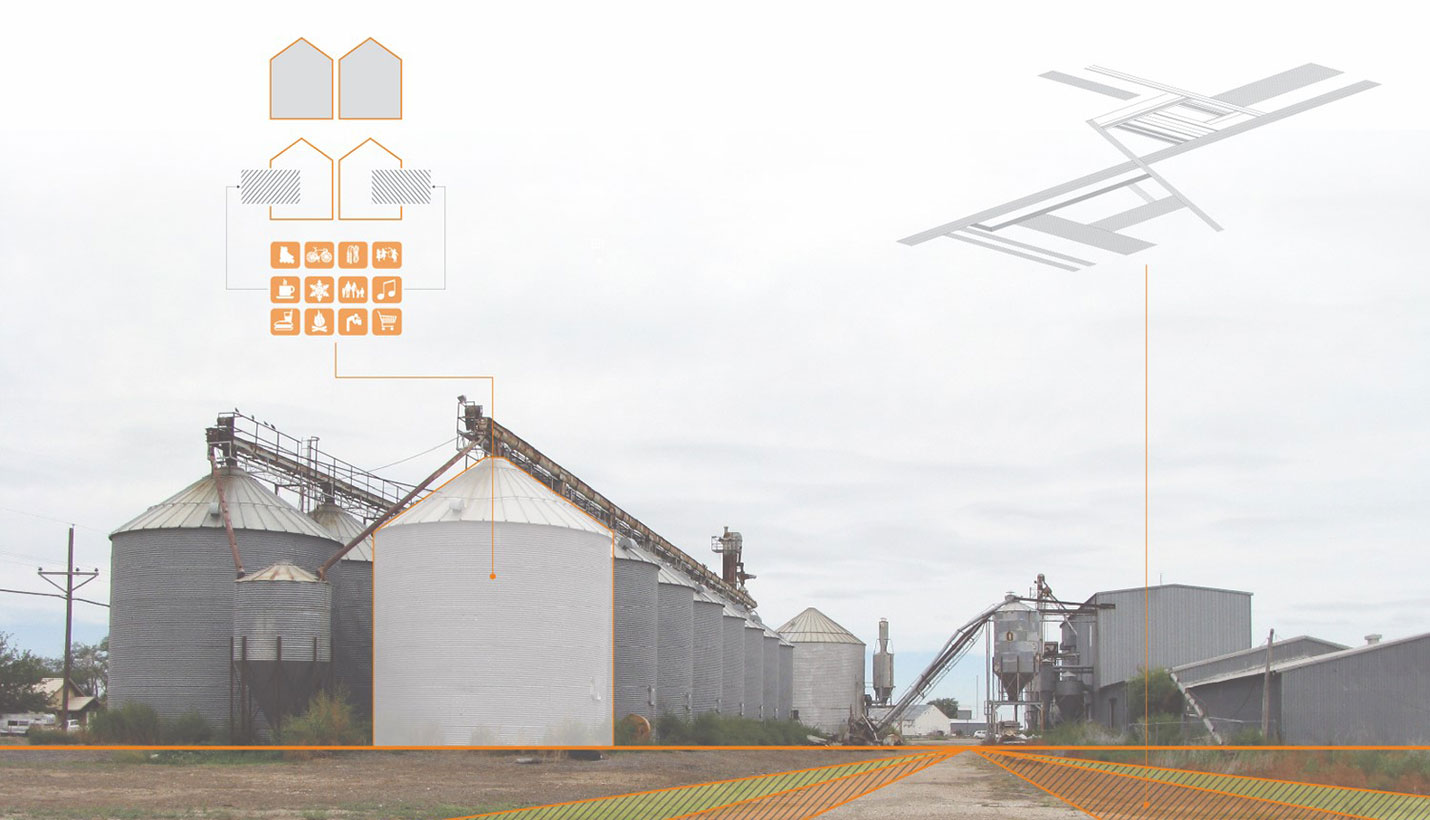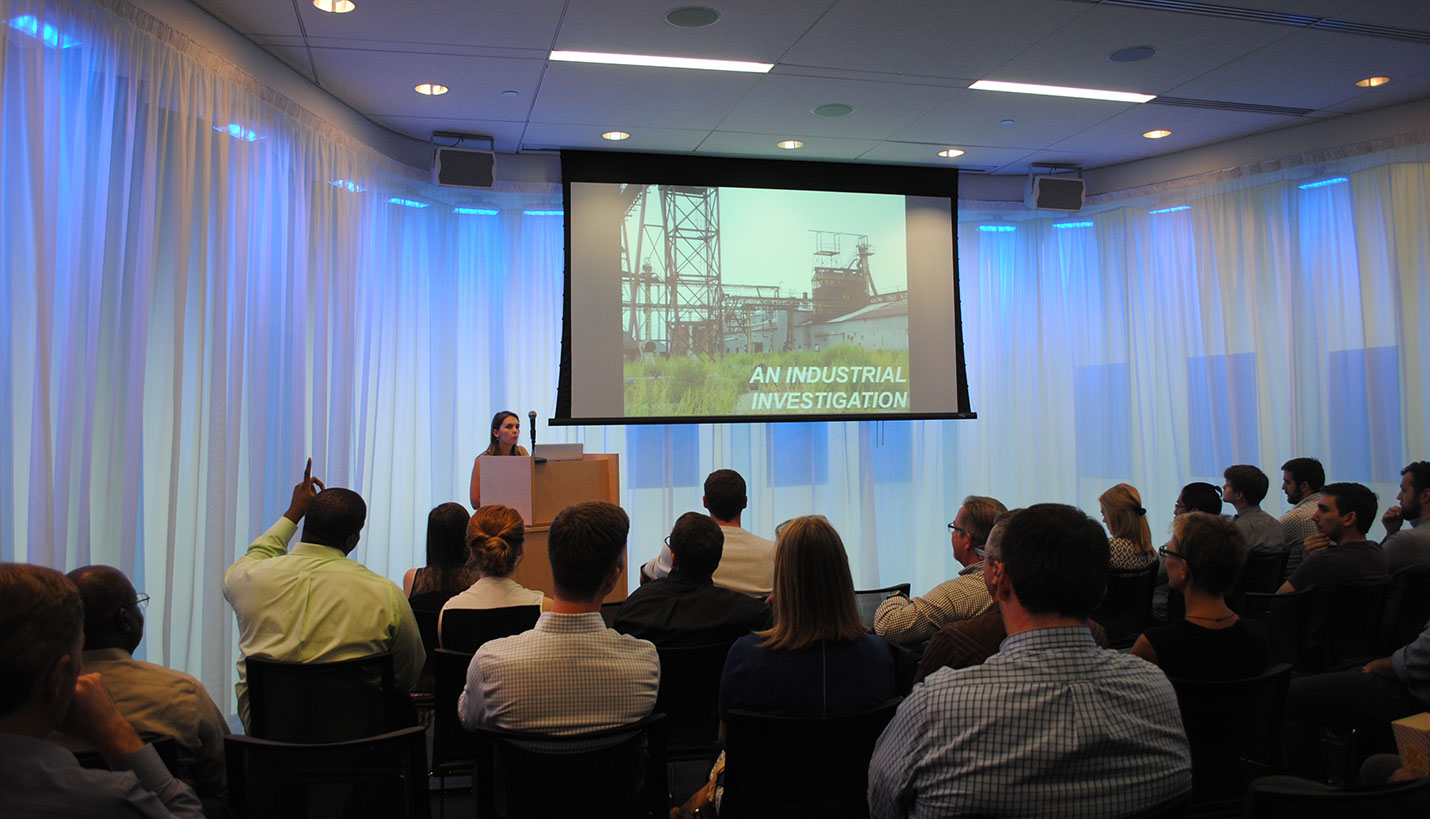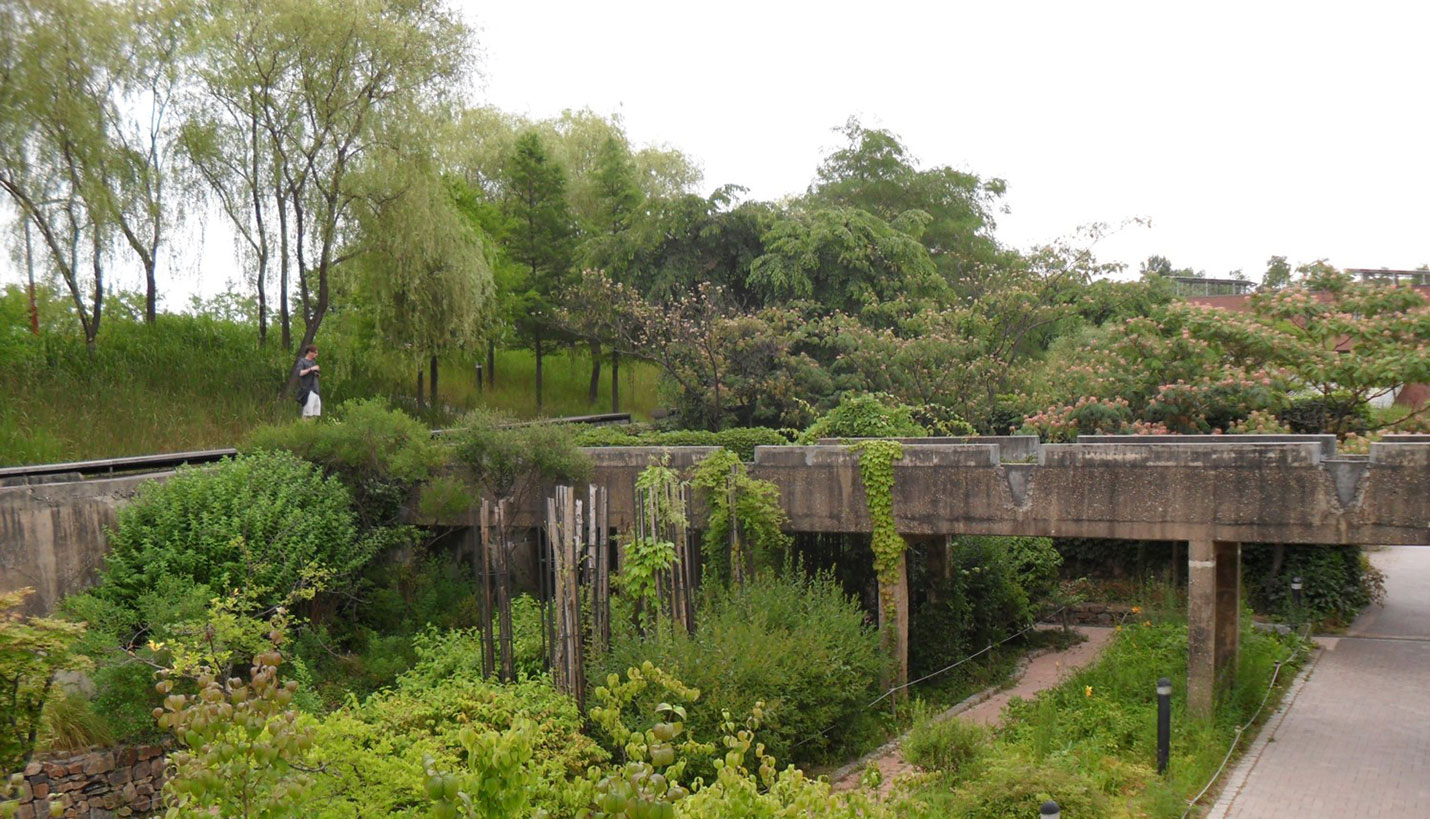Discovering Possibilities in Postindustrial Landscapes
Postindustrial landscapes have been a particular interest of mine for several years. While architects often focus on designing new facilities, many of these abandoned sites have powerful architectural legacies. These “landscapes” offer important traces of the past and help define what our cities are today. Industrial sites are as much a part of a city’s context as any other building. What happens to these structures when they are abandoned?
Recently I gave a presentation on this topic at the Dallas Center for Architecture. The focus of the event was to give design professionals an overview of the integral relationship of open spaces in neighborhoods and of the part nature plays in creating a healthy, connected city. My talk focused on two well-known postindustrial landscapes, along with a research project a colleague and I undertook while we were studying architecture at Texas Tech University.
The High Line – New York City
One of the most recognized examples of a postindustrial landscape is the High Line in New York. This former rail line began operations in 1934 and was abandoned in 1980 when it was no longer needed to transport goods. Many organizations and individuals wanted the rail line to be demolished, but others saw an opportunity for intervention. It is important to note that a vision of an abandoned site’s potential is fundamental to the rebirth of these existing structures. Simply because a place has an important history does not ensure that it will become a popular destination. In order to be successful these abandoned landscapes must be injected with new programmatic opportunities. The High Line is a perfect example. Many events are held here and established programs have been implemented to continue to use the space to its potential. Even beyond the increase in tourism, the park has been the impetus for billions of dollars in real estate investments.
Seonyudo Park – Seoul, South Korea
Seonyudo Park is a former industrial water treatment plant located on an island on the Hangang River in Seoul, South Korea. Strategic planning played a significant role in determining how to preserve the complex and intricate water refinery facility and implement a new programmatic life for the abandoned landscape. The park now illustrates the complex relationship between architectural and natural elements – monumental concrete structures have been combined with natural elements such as an aquatic botanical garden. The park serves as an example of how industry can leave a harsh scar on the landscape and how reestablishing vegetation can be a healing agent - a neutral ground between the built and the natural.
An industrial Investigation: Rethinking Urban Decay – Browning Seed. Inc., Plainview, Texas
During a graduate seminar at Texas Tech University, Vania Franco and I investigated an industrial landscape in a small Texas Panhandle town and sought an opportunistic intervention. The history of this currently abandoned site goes back to 1958 when it was dedicated to the research of open pollinated sorghum. The facilities were primarily used for the cleaning of seed and the manipulation of hybrids and pollination without germination. During the height of exploration of hybrid seed production, the site contained from 55 to 60 individual silo tanks as well as four large tanks that could hold up to three million pounds of seed at once. For the next 50 years, prior to its closing, Browning Seed excelled in chemical processing and genetically modifying seeds including wheat, barley, sorghum, soybeans, corn, and cotton.
The design solution involved acknowledging the site’s history and introducing new possibilities for the site and the town. The decaying landscape will continue to exhibit traces of industry along with the insertion of new programmatic events within the infrastructure. This strategy allows for the potential to hold community events at the site while preserving the memory of its industrial past and creating new ones.
One idea is to convert the grain silos into occupiable spaces that might be used as artist studios or small craft shops. In addition, Plainview could follow a model similar to Lubbock’s First Friday Art Trail, a monthly event that features artists and community outreach program. The industrial site then becomes a designated space to feature a community’s culture and craftsmanship. The town can regulate what events can occur and program a variety of activities such as an educational center, children’s day camp, fairs, music events and movie screening, along with introducing retail or a mixed-use project. The possibilities are endless as long as there is an orchestrated programmatic agenda that benefits the town and the community.
Among the lessons learned is that there needs to be sensitivity between preservation and the introduction of new elements. One is not more important than the other, but rather this becomes a newly established and symbiotic relationship between the elements. For this project in particular, the old and the new depend on each other to achieve success, making the final solution so much richer.
Contributed By
Katerina Paletykina
08/18/2015














